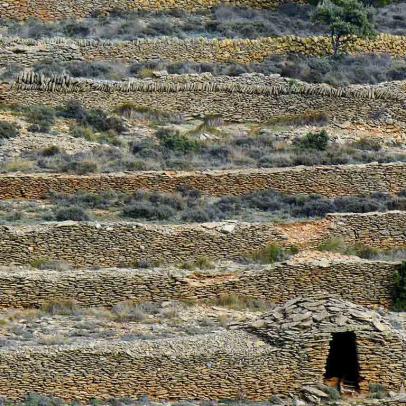The provinces of Teruel and Castellón, like other rural areas in Spain, contain interesting examples of constructions made of dry-stone walls, an art that was designated as World Intangible Cultural Heritage in November 2018.
Dry-stone walling or dry-stone architecture is a traditional technique consisting of constructing with stones and no other building materials except dry earth. The stability of the structures is guaranteed by the careful choice and placing of the stones.
It is a building method that does not harm the environment and reflects the balance between human beings and nature. In addition, the walls help to prevent natural disasters, and contribute in the fight against erosion and desertification. They improve biodiversity and create very positive micro-climates for farming activity. Apart from all this, in those areas where dry-stone walling is common, the art of working with stone is also an important sign of identity.
In the Maestrazgo in Castellón, especially at places like Vilafranca, dry-stone walling has been and continues to be a constant activity. Indeed, there are kilometres of dry-stone walls and hundreds of huts, ponds, wells, ploughed fields, sheep-tracks, etc.
Vilafranca is the location of the first Dry-Stone Wall Museum in the Community of Valencia. Located upstairs in the Market building, it displays information about the techniques used in this building method, the tools they utilised, the models that exist, etc. It also offers three options of routes to discover the landscapes with these types of structure.
To visit Dry Stone Museum: Plaza de la Iglesia, 6. 964 44 14 32 / vilafranca@touristinfo.net
ALC: 19.05.2023


